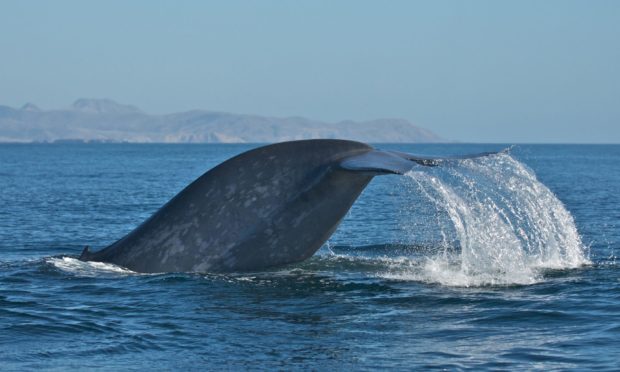So what do you think of 2021 so far?
It’s quiet, isn’t it? Did you say “too quiet”?
That reminds me of a TV advert for Glenmorangie.
Two men are sitting, a little incongruously, in armchairs, in a wild Highland landscape.
Each has a glass of whisky. One sighs contentedly, says: “It’s quiet.”
The other says: “Too quiet.”
The first one says: “Too quiet? You must be new around here.”
Then the caption comes up: “Glenmorangie, Glen of Tranquility”.
I always liked that ad, can’t imagine why.
Remember the lockdown birdsong?
Remember last spring, the first lockdown, and how the letters page of this newspaper and many others the length and breadth of the land, were full of people who don’t know a crow from a cuckoo until they open their mouths, rhapsodising about birdsong, about how much more audible it was because there was no human static to corrupt nature’s acoustics.
Because it was quiet.
This time, this particular 2021 take on lockdown, it’s too early in the year for much birdsong yet.
There’s the odd piccolo mutter of robin, the occasional rant of a wren.
And if you are in the right place at the right time, and increasingly as January unfurls, a mistle thrush’s doodling jazzy soliloquy on the edge of a wood will enrich your late afternoon, and on into the dusk, sometimes for an for an hour or more.
A harsh, high-pitched, three-syllable bark far-carrying on a frosted night is a fox who might be living closer to you than you think, wherever you are.
Humans are the noisiest species
This much we know: we are the noisiest species on the planet and when our noise-making is curtailed, nature sighs with relief.
It’s true of the landscapes we inhabit, and it’s true of the oceans.
Global shipping movements amount to a colossal intrusion, an unimaginable and immeasurable disruption to the every day, every night lives of unquantifiable numbers of ocean creatures the world over.
Among those we know a little about are whales, how shipping noise and submarine sonar can disrupt their capacity to navigate and communicate by sound, confuse them to the extent that every year they strand in shallow water and die.
We kill them as surely as the harpoons that were the cutting edge of our shameful whaling hey-day.
Back in 2008, there was an international gathering of oceanography scientists in the United States of America.
One of their number made a speech which included this: “I propose that scientists, environmentalists and maritime industries organize an International Quiet Ocean Experiment in which humans refrain from adding noise to the oceans for a few hours or so to achieve a great diminuendo.”
The theory was that in that time, however long it lasted, researchers would listen in on the ocean and observe the behaviour of ocean life to see how it responded to “the quiet change”.
It was a scientist’s letter to Santa, who simply couldn’t deliver.
Too many ships
The ocean is too crammed with too many ships and too many fishing boats taking too much from the ocean and putting nothing back but bilge water and oil leaks – and a great deal of noise, all of it in the name of someone’s global economy balance sheet.
But some scientists were so taken with the idea that they never forgot about it, and then, not because of a global agreement by humankind, but because of a global pandemic, international shipping like international air travel and international almost everything else, slowed to a trickle.
The great diminuendo had happened by default. And all last year, science listened to the ocean. It’s still listening.
One of the things we have learned concerns the biggest creature the Earth has ever known, the blue whale.
You might think that because of the sheer size of them, we would have no trouble keeping tabs on the blue whales of the world, but you would be wrong.
And while trying to listen to Omura’s whales off Madagascar, a species only identified in the early years of this century, they heard something else altogether.
It was a whale song completely different from any that had ever been heard.
It was convincing proof that there was a specific population of blue whales in the Indian Ocean that no-one knew was there, and like all blue whale populations, they have their own song.
Blue whales grows to 100 feet long and weigh up to 380,000 lbs; an Omura’s whale is about 40 feet long and weighs about 44,000lbs.
Spare a thought for nature
How come we know the little guys are there but not the big guys?
What it amounts to is that like a lot of creatures that have a bad history with human beings (wolves for example, tigers), blue whales are good at not being seen when they don’t want to be seen, which at least partly explains why estimates of the world’s blue whale population is 10,000-25,000, which is another way of admitting we don’t know where they are.
So if you think it’s too quiet right now, spare a thought for nature, because for nature, it can never get too quiet.











